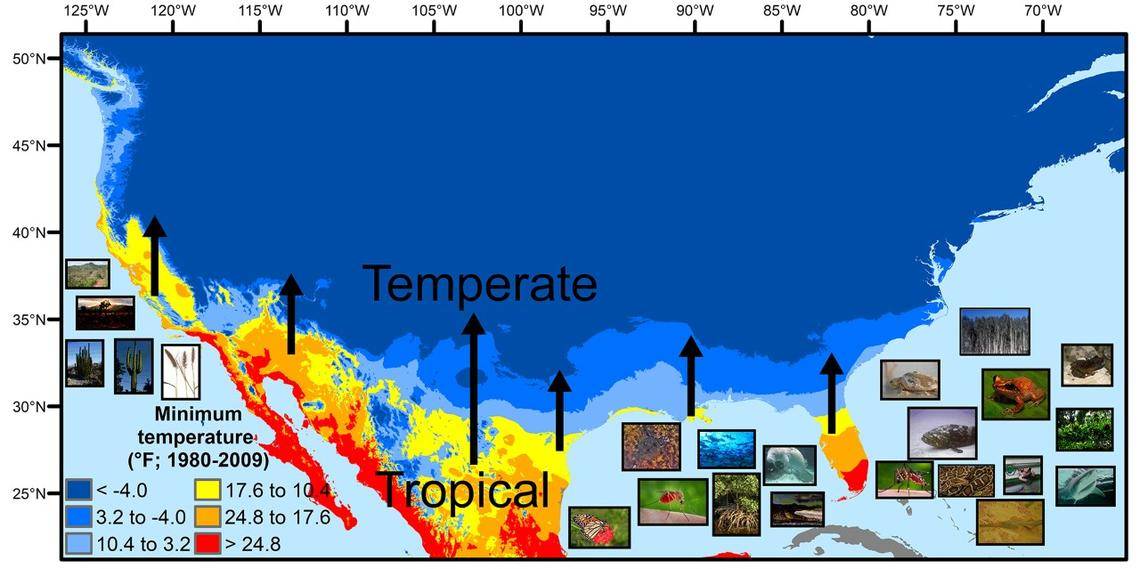A new study is predicting that stretches of the southernmost U.S. will “tropicalize” in coming decades as cold snaps become less prevalent, leading non-native plant and animal species to move in.
The study was led by the U.S. Geological Survey found there are some potential benefits for cold-sensitive animals like manatees and sea turtles, there’s also drawbacks, including increasing the spread of insect-borne diseases and destructive invasive species.
The study found a number of tropical plants and animals are seeing their ranges expand to the north. Some are native species to the U.S. like mangroves — salt-tolerant trees — and the sporting fish species snook. Others are invasive species like the Burmese python and buffelgrass.
The study was published in the journal Global Change Biology and outlines how cold-sensitive tropical plant and animal populations are kept in check by cold snaps during the winter. AS these become fewer and less extreme due to climate change, warmer winters will allow the organisms to spread north into Florida, Alabama, Mississippi, Louisiana, Texas, New Mexico, Arizona and California.
Even though cold snaps are short, they have an outsized impact in limiting the spread of invasive species, which are killed by cold temperatures.
“We don’t expect it to be a continuous process,” said Michael Osland, the study’s lead author, in a press release. “There’s going to be northward expansion, then contraction with extreme cold events like the one that just occurred in Texas, and then movement again. By the end of this century, we are expecting tropicalization to occur.”
The study examined temperature records in several southern cities. They found that in each city surveyed, mean winter temperatures rose over time, with the coldest winter temperatures rising.
Some changes that are already underway include:
Cold-sensitive mangrove forests replacing temperate salt marsh plants along the Gulf and Atlantic coasts for 30 years. As sea levels rise, mangroves may move inland, displacing temperate and freshwater forests.
Buffelgrass moving into deserts, fueling wildfires.
Tropical mosquitos that can carry diseases like West Nile virus expanding their range.
The southern pine beetle, which can damage pine forests, moving northward with warming winters.
While the study does not include the Pacific Northwest, climate scientists here are expecting to see heavier flooding and more wildfires in coming decades.


